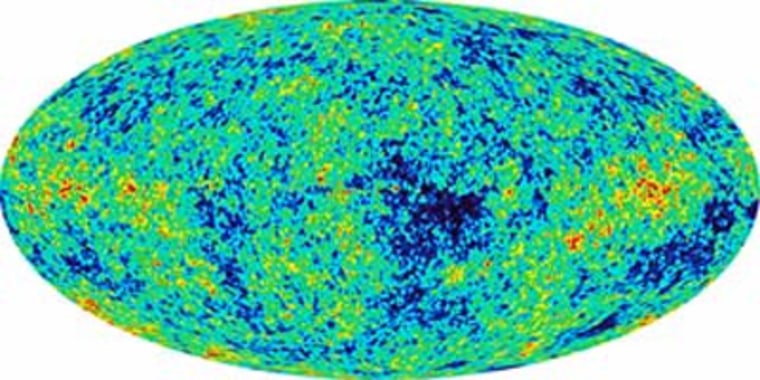If you've ever wondered how big the universe is, you're not alone. Astronomers have long pondered this, too, and they've had a hard time figuring it out. Now an estimate has been made, and it’s a whopper.
The universe is at least 156 billion light-years wide.
In the new study, researchers examined primordial radiation imprinted on the cosmos. Among their conclusions is that it is less likely that there is some crazy cosmic "hall of mirrors" that would cause one object to be visible in two locations. And they've ruled out the idea that we could peer deep into space and time and see our own planet in its youth.
First, let's see why the size is a number you've never heard of before.
Stretching reality
The universe is about 13.7 billion years old. Light reaching us from the earliest known galaxies has been travelling, therefore, for more than 13 billion years. So one might assume that the radius of the universe is 13.7 billion light-years and that the whole shebang is double that, or 27.4 billion light-years wide.
But the universe has been expanding ever since the beginning of time, when theorists believe it all sprang forth from an infinitely dense point in a Big Bang.
"All the distance covered by the light in the early universe gets increased by the expansion of the universe," explains Neil Cornish, an astrophysicist at Montana State University. "Think of it like compound interest."
Need a visual? Imagine the universe just a million years after it was born, Cornish suggests. A batch of light travels for a year, covering one light-year (which is the equivalent of about 5.9 trillion miles or 9.5 trillion kilometers). "At that time, the universe was about 1,000 times smaller than it is today," he said. "Thus, that one light-year has now stretched to become 1,000 light-years."
All the pieces add up to 78 billion light-years. The light has not traveled that far, but "the starting point of a photon reaching us today after travelling for 13.7 billion years is now 78 billion light-years away," Cornish said. That would be the radius of the universe, and twice that — 156 billion light-years — is the diameter. That's based on a view going 90 percent of the way back in time, so it might be slightly larger.
"It can be thought of as a spherical diameter is the usual sense," Cornish added comfortingly.
(You might have heard the universe is almost surely flat, not spherical. The flatness refers to its geometry being "normal," like what is taught in school; two parallel lines can never cross.)
Hall of mirrors
The scientists studied the cosmic microwave background, or CMB, radiation unleashed about 380,000 years after the Big Bang, when the universe had first expanded enough to cool and allow atoms to form. Temperature differences in the CMB left an imprint on the sky that was used last year to reveal the age of the universe and confirm other important cosmological measurements.
The CMB is like a baby picture of the cosmos, before any stars were born.
The focus of the new work, which was published last week in the journal Physical Review Letters, was a search of CMB data for paired circles that would have indicated the universe is like a hall of mirrors, in which multiple images of the same object could show up in different locations in space-time. A hall of mirrors could mean the universe is finite but tricks us into thinking it is infinite.
Think of it as a video game in which an object disappearing on the right side of the screen reappears on the left.
"Several years ago we showed that any finite universe in which light had time to 'wrap around' since the Big Bang would have the same pattern of cosmic microwave background temperature fluctuations around pairs of circles," Cornish explained. They looked for the most likely patterns that would be evident in a CMB map generated by NASA's Wilkinson Microwave Anisotropy Probe.
They didn't find those patterns.
Don't look back
"Our results don't rule out a hall-of-mirrors effect, but they make the possibility far less likely," Cornish told Space.com, adding that the findings have shown "no sign that the universe is finite, but that doesn't prove that it is infinite."
The results do render impossible a "soccer ball" shape for the universe, proposed late last year by another team. "However, if they were to 'pump up' their soccer ball to make it larger, they could evade our bounds" and still be in the realm of possibility, Cornish said. Other complex shapes haven't been ruled out.
The findings eliminate any chance of seeing our ancient selves, however, unless we can master time travel.
"If the universe was finite, and had a size of about 4 billion to 5 billion light-years, then light would be able to wrap around the universe, and with a big enough telescope we could view the Earth just after it solidified and when the first life formed," Cornish said. "Unfortunately, our results rule out this tantalizing possibility."
